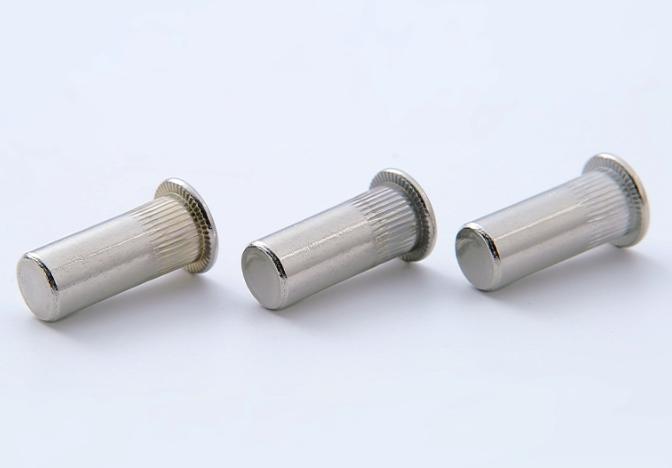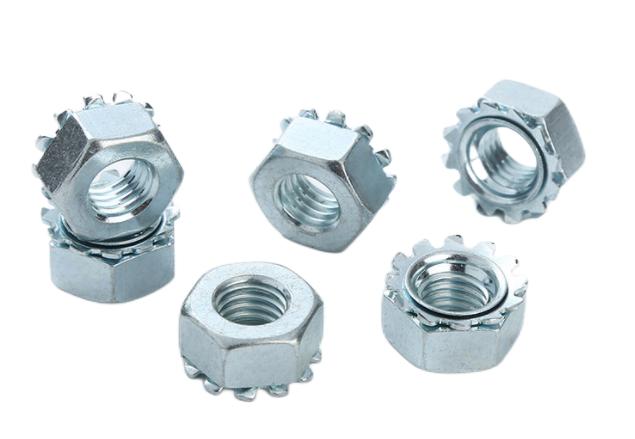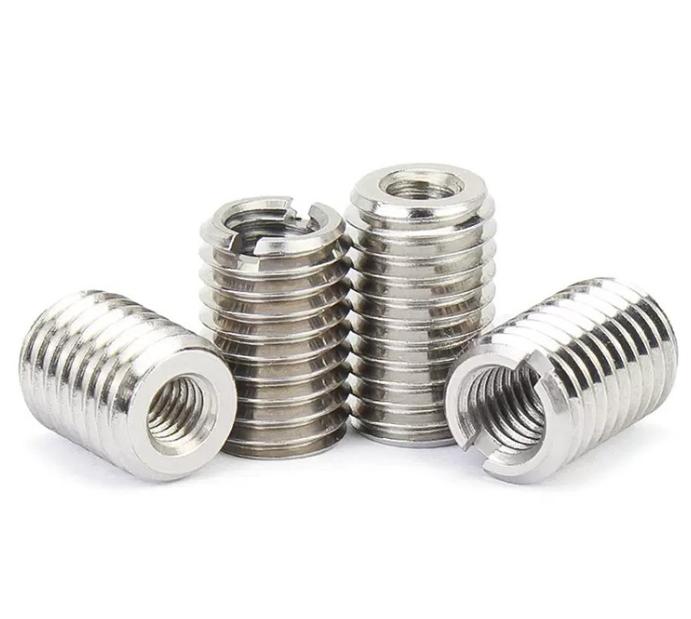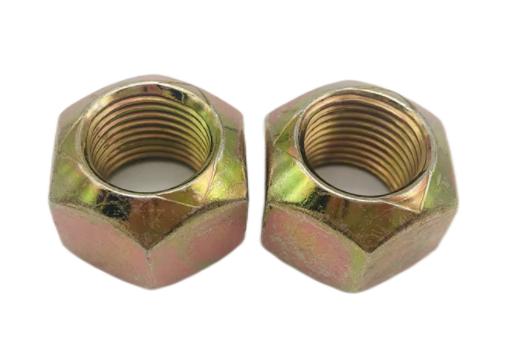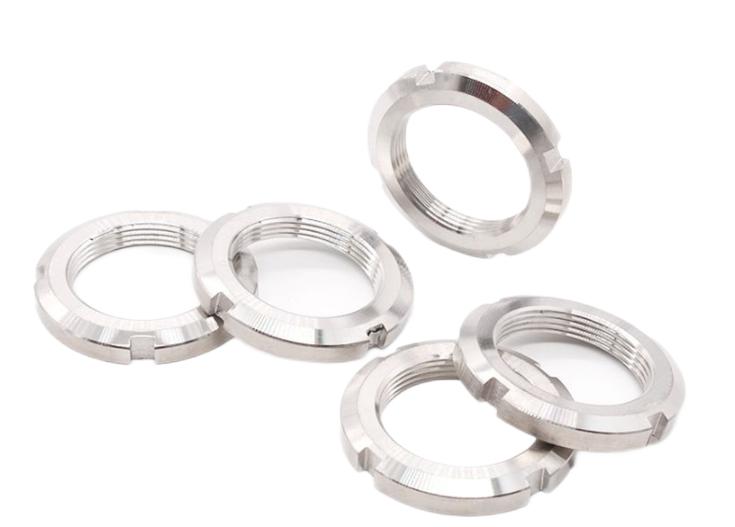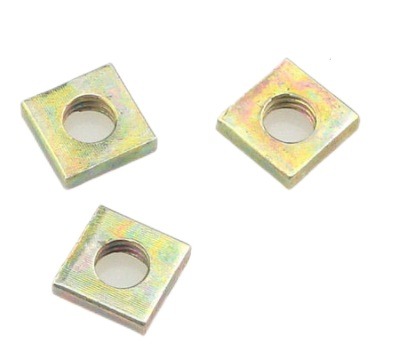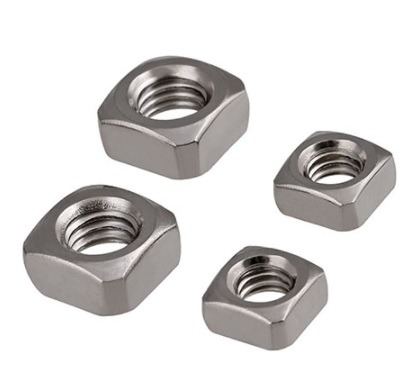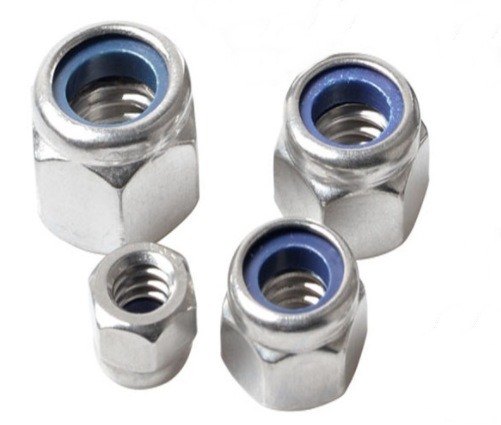Square Nut vs Hex Nut: What Are The Differences
When it comes to hardware fasteners, nuts play a crucial role in holding components together and ensuring the stability and integrity of various structures and machinery. Among the various types of nuts available in the market, two commonly encountered options are hex nuts and square nuts. While both serve the fundamental purpose of securing fasteners, they possess distinct characteristics that make them suitable for different applications.
Hex nuts, with their six-sided shape resembling a hexagon, are a ubiquitous sight in construction, automotive, and industrial settings. On the other hand, square nuts stand out with their four equal sides and right angles, finding specific uses in woodworking, furniture assembly, and other applications where stability and anti-rotation features are paramount.
Understanding the differences between hex nuts and square nuts is essential for selecting the most appropriate fastening solution for a given project. In this article, we will delve into the distinguishing features, common uses, advantages, drawbacks, and other important considerations associated with these two nut types. Hope they can help you make informed choices for your specific applications.
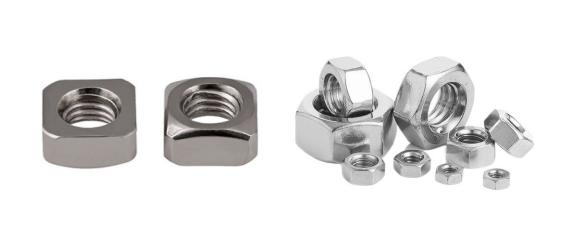
What are Hex Nuts
Definition of hex nuts
Hex nuts are hardware fasteners characterized by its six-sided shape, resembling a hexagon. They are typically made of metal, such as steel or brass, and feature internal threads to mate with external threads on bolts or screws. Hex nuts come in various sizes, ranging from small to large, and are available in different materials, finishes, and thread pitches.
What are hex nuts used for
Hex nuts find extensive use in a wide range of industries and applications. They are commonly employed in the construction, automotive, machinery, and electronics sectors. Hex nuts are crucial in assembling and securing components together, providing a stable and reliable connection. They are often used in conjunction with bolts, screws, or threaded rods to create robust fastening systems.
The advantages of hex nuts
- Versatility: Hex nuts are compatible with a wide variety of fasteners and can be used in diverse applications.
- Secure fastening: The six-sided design provides multiple contact points, ensuring a secure and tight connection.
- Torque distribution: The hexagonal shape allows for an even distribution of torque during installation, reducing the risk of damage or stripping.
- Ease of use: Hex nuts can be easily tightened or loosened using standard wrenches or socket sets, making them convenient for assembly and maintenance tasks.
- Common availability: Hex nuts are widely available in hardware stores and are generally more accessible compared to specialized nuts.
The limitations of hex nuts
- Limited access: The design of hex nuts may make it challenging to install or remove them in tight or hard-to-reach spaces.
- Angular misalignment: In certain cases, the hexagonal shape may restrict movement or adjustment in situations requiring angular misalignment.
- Surface damage: Improper wrenching or excessive force can lead to surface damage, affecting the integrity of the nut.
- Corrosion susceptibility: Depending on the material and finish, hex nuts may be prone to corrosion, especially in harsh environments or when exposed to corrosive substances.
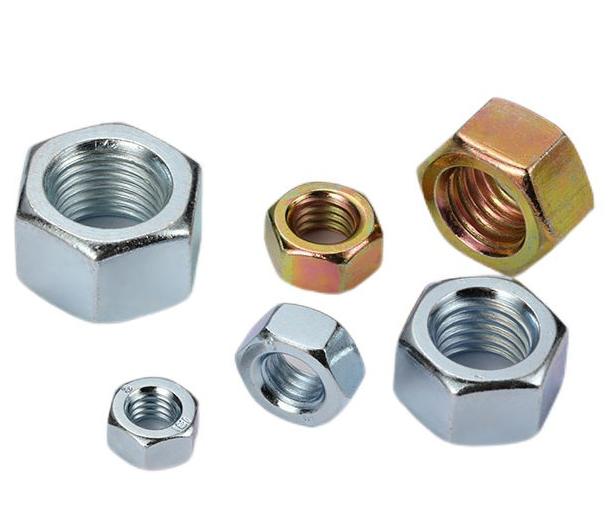
What are Square Nuts
Definition of square nuts
Square nuts are hardware fasteners characterized by their square shape, with four equal sides and right angles. They are typically made of metal, such as stainless steel or zinc-plated steel, and have internal threads that match with external threads on bolts or screws. Square nuts are available in various sizes and thread pitches.
What are square nuts used for?
Square nuts are often employed in situations where a secure and tight connection is required, such as in furniture construction, structural framing, and machinery installations. They are commonly used in conjunction with bolts or threaded rods.
The advantages of square nuts:
- Anti-rotation feature: The square shape of the nut helps prevent it from rotating when tightened, providing added stability to the connection.
- Secure fastening: Square nuts offer a firm grip and resist loosening due to vibration or torque.
- Easy alignment: The flat sides of the nut facilitate alignment during installation, making it easier to position and secure.
- Enhanced wrenching surface: The larger surface area of square nuts allows for better wrenching, reducing the risk of surface damage or stripping.
- Aesthetic appeal: Square nuts are sometimes preferred in applications where the visible appearance of the fasteners is important, as they can provide a unique visual element.
The limitations of square nuts:
- Limited availability: Square nuts may not be as widely available as hex nuts in certain hardware stores, making them slightly less convenient to procure.
- Tool requirements: Specialized wrenches, such as square socket wrenches or pliers, may be needed for installation and removal, which can add to the tooling requirements.
- Limited compatibility: Square nuts may not be compatible with certain fasteners or require specific types of bolts or screws with matching square heads.
- Accessibility challenges: Similar to hex nuts, the square shape may make it difficult to install or remove square nuts in tight or hard-to-reach spaces.
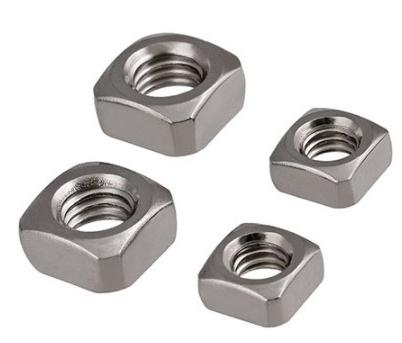
5 Differences between the Square Nuts and Hex Nuts
1 Size and shape:
Square nuts have a square shape with four equal sides and right angles.
Hex nuts have a hexagonal shape with six sides.
2 Compatibility with fasteners and tools:
Square nuts are typically used with bolts or screws that have square heads, requiring specialized tools like square socket wrenches or pliers for installation and removal.
Hex nuts are compatible with a wide range of fasteners, such as bolts, screws, or threaded rods, and can be easily tightened or loosened using standard wrenches or socket sets.
3 Strength and stability:
Square nuts provide a secure and stable connection due to their anti-rotation feature, making them resistant to loosening caused by vibration or torque.
Hex nuts also offer reliable strength and stability, with the six-sided design providing multiple contact points for a tight connection.
4 Ease of installation and removal:
Square nuts may be more challenging to install or remove in tight or hard-to-reach spaces due to their square shape and the need for specialized tools.
Hex nuts are generally easier to install and remove, as they can be tightened or loosened using standard wrenches or socket sets, offering greater accessibility.
5 Cost and availability:
The cost and availability of square nuts may vary depending on the specific size, material, and finish. They may be slightly less commonly available compared to hex nuts in certain hardware stores.
Hex nuts are widely available and commonly stocked in hardware stores, making them more accessible and generally more cost-effective.
Overall, both square nuts and hex nuts have their unique characteristics and advantages. Square nuts offer anti-rotation and enhanced stability but require specialized tools for installation. Hex nuts provide versatility, ease of use, and widespread availability, making them a popular choice for various applications. The choice between the two depends on the specific requirements of the project, including size, compatibility, desired strength, accessibility, and cost considerations.
In the realm of hardware fasteners, the choice between hex nuts and square nuts ultimately boils down to the specific requirements of your project. Understanding the differences between these two types of nuts allows you to make an informed decision that will ensure a secure and reliable fastening solution. Whether you are looking for a square nut or hex nut, KENENG can provide you with the best products, please feel free to contact us.

